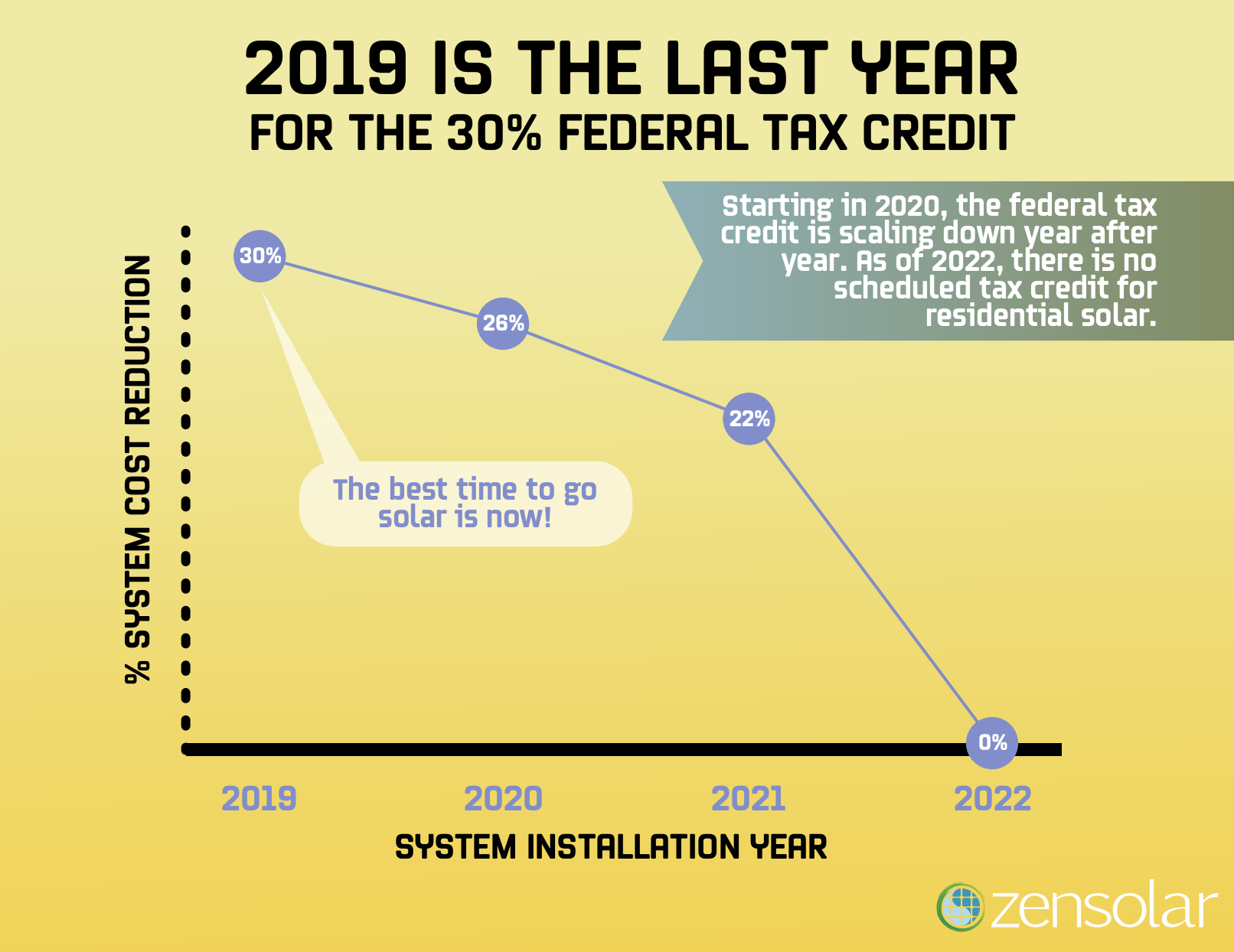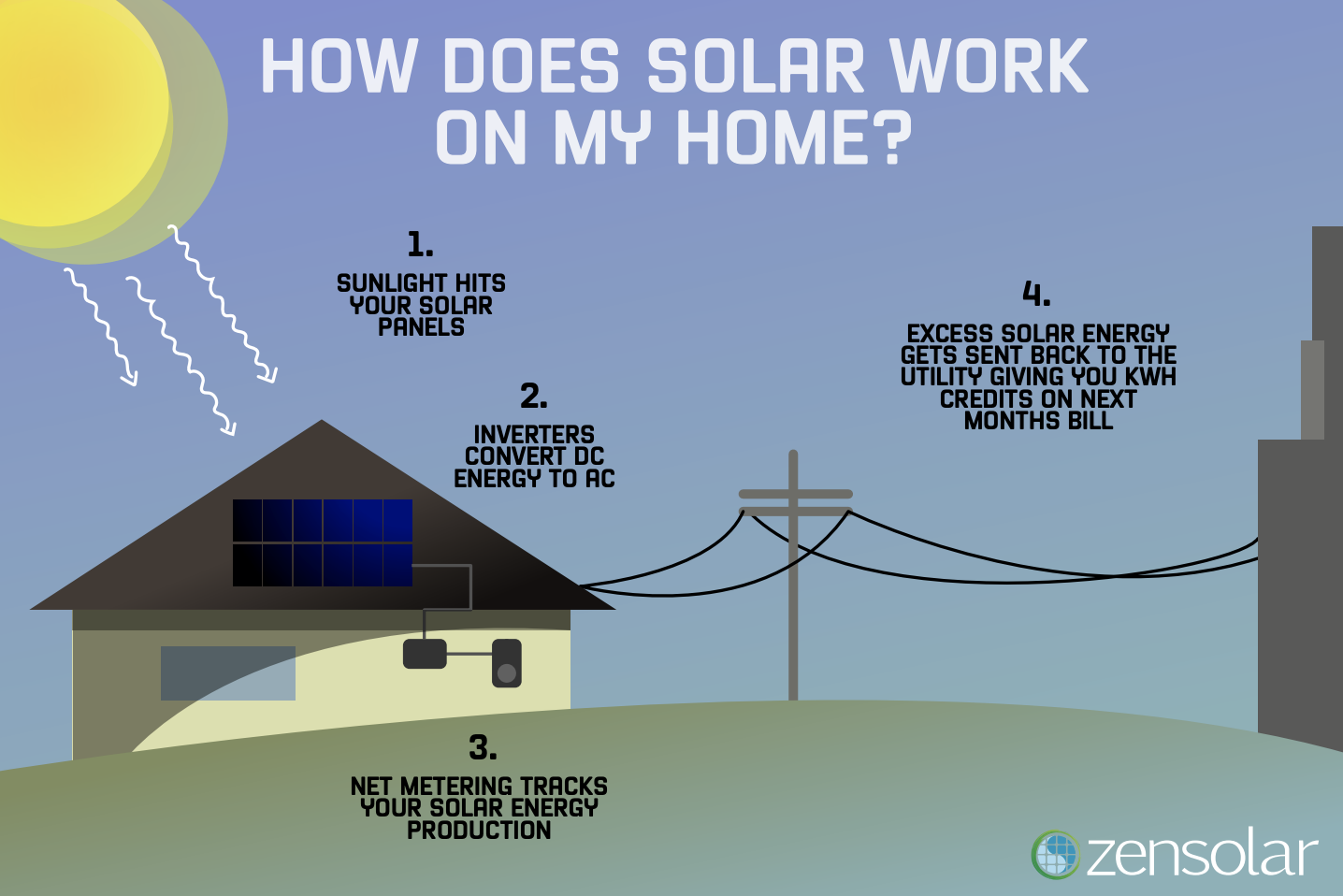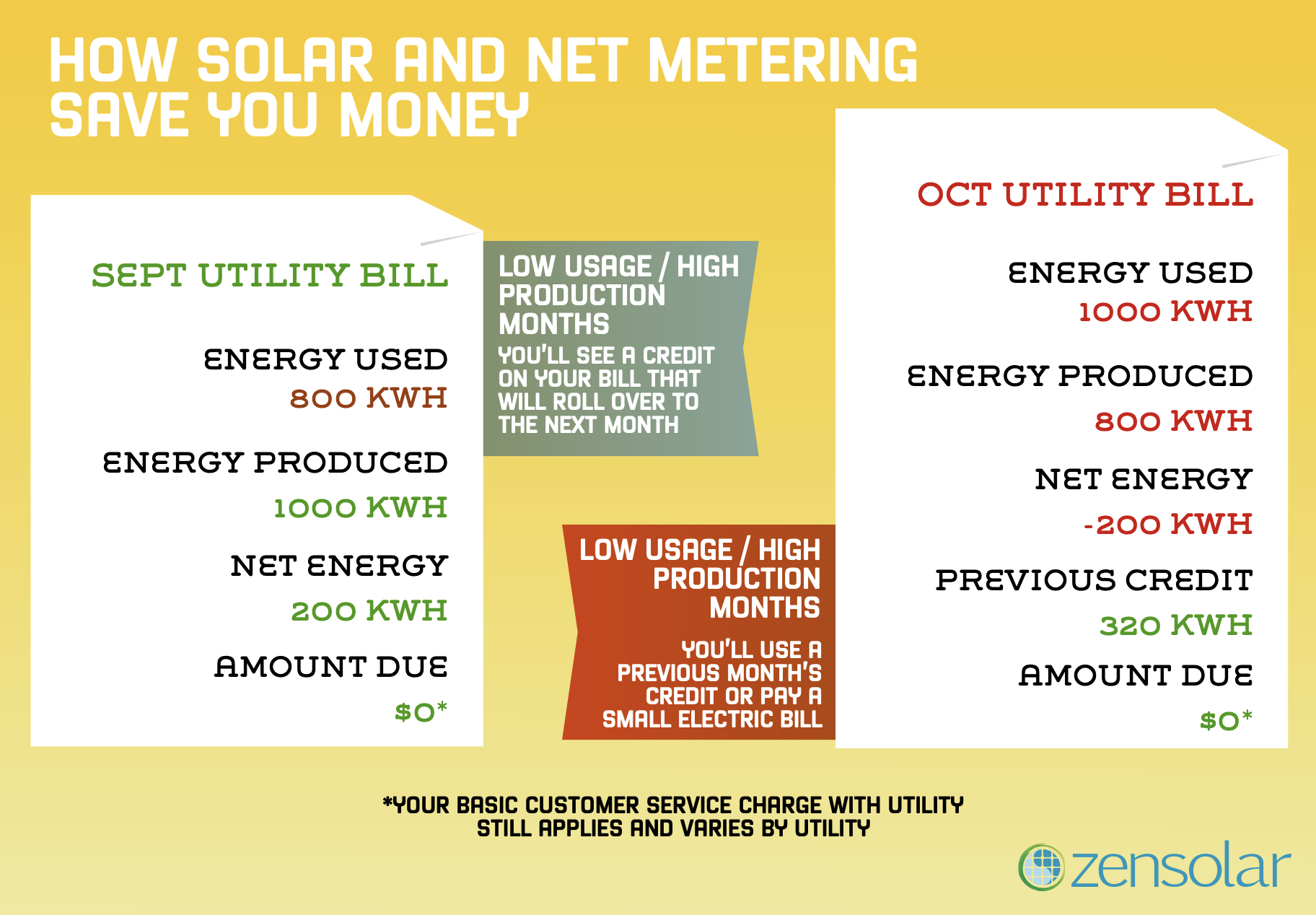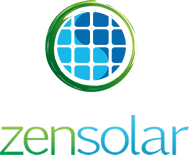How much do solar panels cost in 2019?
A number of factors affect the cost of going into solar in 2019. How much energy your home usually consumes, what state you live in, and which incentives you’re eligible for will all play a part in determining both your upfront cost and the length of your payback period. Though purchasing your own home power source is certainly a big investment, ZenSolar will coordinate all the elements of your system and available incentives to ensure your investment is as cost-effective as possible.
30% Federal Solar Investment Tax Credit
 Federal, state, and local incentives are a large part of reducing the price of solar. Perhaps the most important incentive is the Federal Investment Tax Credit. This credit is worth 30% of the cost of your solar installation. Not to be confused with a tax deduction, a tax credit is a dollar for dollar reduction in your tax liability. Consider this example: if you spend $10,000 on a solar installation, you will be eligible for a $3,000 tax credit.
Federal, state, and local incentives are a large part of reducing the price of solar. Perhaps the most important incentive is the Federal Investment Tax Credit. This credit is worth 30% of the cost of your solar installation. Not to be confused with a tax deduction, a tax credit is a dollar for dollar reduction in your tax liability. Consider this example: if you spend $10,000 on a solar installation, you will be eligible for a $3,000 tax credit.
Essentially, the FITC allows you to invest 30% of the cost of your installation into an energy producing asset which you own, rather than just paying it to the federal government.
2019 is the final year that the FITC is worth 30%. In 2020, it will step down to 26%, and continue to decline each year afterward. Any home in the United States is eligible for this valuable incentive.
Local Incentives
The federal government isn’t the only entity that offers important incentives for solar. Many state governments and local municipalities offer their own tax credits and other perks like sales tax exemptions, property tax exemptions, and rebates.
These incentives can be combined to drastically reduce the overall cost of your system. In some states, homeowners are eligible for quite a few incentives.
Most incentives compensate the solar array owner after it has been installed.
Renewable Energy Credits
In some states, utility companies are required to source a percentage of their energy from renewable resources. One of the ways these companies meet their quotas for renewable energy is by purchasing electricity from residential solar systems. They purchase 1 MW units often called Renewable Energy Credits, or Solar Renewable Energy Credits (SRECs). If these credits play an important role in your state, you may be able to get substantial compensation for the energy you generate with solar.
A ZenSolar design maximizes your home’s solar potential
Every solar installation is unique. ZenSolar takes special care to design a system that is tailor-made for your home and your home’s electricity history.
Your utility meter tracks detailed reports of your home’s electricity usage. A ZenSolar Energy Expert will assess months worth of your electric bills before starting the array design process. Our main objective is to create a system that meets your energy needs while reducing your costs.
Examples:
If you use most of your electricity in the evening, ZenSolar may decide it’s best to face your array slightly west to match your solar generation with your home’s time of demand. Or maybe your state has terrific net metering laws, we may choose to face your array south so you can generate the maximum amount of energy, and accrue the largest credit from your utility company.
A solar array is a long term investment, you want to work with a professional company that is capable of giving you the best total cost of ownership. A lower initial cost doesn’t mean you’re generating the most savings, or getting the shortest payback period.
How do solar panels work?
Though solar has been an important topic for quite some time now, we’re still frequently asked, how do solar panels work?
This question doesn’t come as a surprise. A solar panel certainly has its fair share of complicated aspects. Fortunately, getting a good grasp of how one functions doesn’t take much time at all. In this piece, we’ll cover how solar panels work as well as the nuts and bolts of the most important concepts for residential and commercial solar.
Solar panels, technically called “modules” by the solar industry, use crystalline silicon to capture the sun’s energy. Silicon is the dark layer inside a solar panel which is enclosed by a layer of glass or hard plastic on the front and back of the panel.
When sunlight hits the panel, energy is absorbed by the silicon and converted into an electric current. Now that the sunlight has been harnessed as electricity, it can travel through cables to your home, business, or electrical grid. Thus, any time the sun is hitting your panels, you will be generating electricity. You need a number of solar panels to generate enough energy to power your home. The configuration of numerous panels together is typically called a “solar array.”
The electric current has to go through an important step before it can be used in your home. Solar panels generate Direct Current (DC) electricity. Your home runs on a different form of electricity called Alternating Current (AC). To convert DC to AC, the electricity has to pass through a device called an inverter.
There are a number of types of inverter setups. It’s most common for an array to have a single inverter. In residential installations, the inverter is typically attached to the side of the house. Cables run from the solar panels to the inverter, then from the inverter to the home or grid.
In some arrays, every panel has its own inverter, called a micro-inverter.
How does solar power work on my home?
 Any time sunlight hits your solar panels, it is converted into electricity which is fed into your home for use. Thus, anytime the sun is shining, your home has clean, solar energy at its disposal. Whenever the sun isn’t hitting your panels, they will not be producing energy. If you have battery storage connected to your solar panels, you can store the energy you harvest from the sun and use during the day or night.
Any time sunlight hits your solar panels, it is converted into electricity which is fed into your home for use. Thus, anytime the sun is shining, your home has clean, solar energy at its disposal. Whenever the sun isn’t hitting your panels, they will not be producing energy. If you have battery storage connected to your solar panels, you can store the energy you harvest from the sun and use during the day or night.
The amount of energy you generate in a day fluctuates depending on the weather and time of year. Since winter days have fewer daylight hours, your panels don’t receive as much sunlight and therefore produce less. You also produce less energy on cloudy days than on blue-sky days.
Though you may not receive enough sunlight to power your entire home on solar energy during the winter or during cloudy days, even the shortest days of the year and the cloudiest days still allow you to produce some clean energy.
During the warmer months when the sun hits your home more directly and for more hours of the day, you may generate more electricity than your home needs during the daylight hours. During these hours your home will send your excess electricity onto the power grid for other homes to use through a process called Net Metering.
Once the sun goes down, your home will switch back to drawing electricity from the grid. Fortunately for homes that Net Meter solar power, they often generate so much excess electricity that you can accrue credits with your utility company which reduces the dollar amount of your electric bill.
In contrast to solar, which allows you to harvest energy on-site at your home, grid-tied electricity is usually generated in a much more complicated way. Typically, a power plant burns fossil fuels to generate power. The power plant is usually located far from your home, so the electricity has to be carried long distances in power lines. According to 99% of climate scientists worldwide, burning fossil fuels creates greenhouse gases that get trapped in Earth’s atmosphere which directly contributes to the warming of our planet.
How does solar save money?
Homeowners save money with solar by reducing their electric bills and powering their houses with free energy from the sun.
Whenever your home is powered with electricity from your solar panels, you don’t need to draw electricity from your utility company. During sunny days, you’ll often go the entire day without adding to your electric bill.
Besides just getting the opportunity to draw energy from the sun, rather than from a plant that’s typically powered by fossil fuels, you can drastically reduce your electric bill through Net Metering.
Net metering is a billing process that your utility company is often required to offer you. Whether net metering is available to you varies by region and utility provider. It ensures that you’re compensated for the solar energy you send back to the grid at the same price that you pay for fossil fuel electricity. Thus, when you get your bill at the end of the month, you’ll only pay for the “net” amount of electricity used. Let’s say that during August your solar panels produce much more electricity than your home used during the day. All that excess power you send back to the grid will develop into a sizable credit that your utility company owes you. In some states, you can roll that credit over to the winter months, which allows you to offset your energy costs when you produce less solar.
 Consider this example:
Consider this example:
Your home consumes 800 units of electricity in September, and your solar panels generate 1000 units. At the end of the month, you will have a net amount of 200 units that become credits with your utility.
Then in October your home consumes 800 units of electricity, but your solar panels only generate 600 units. The 200 credits you earned from net metering in September will roll over to October and offset your electric bill for the month.
For some homeowners, net metering allows them to offset their entire electric bill for the year. This drastically reduces their payback period for the cost of their solar system.


